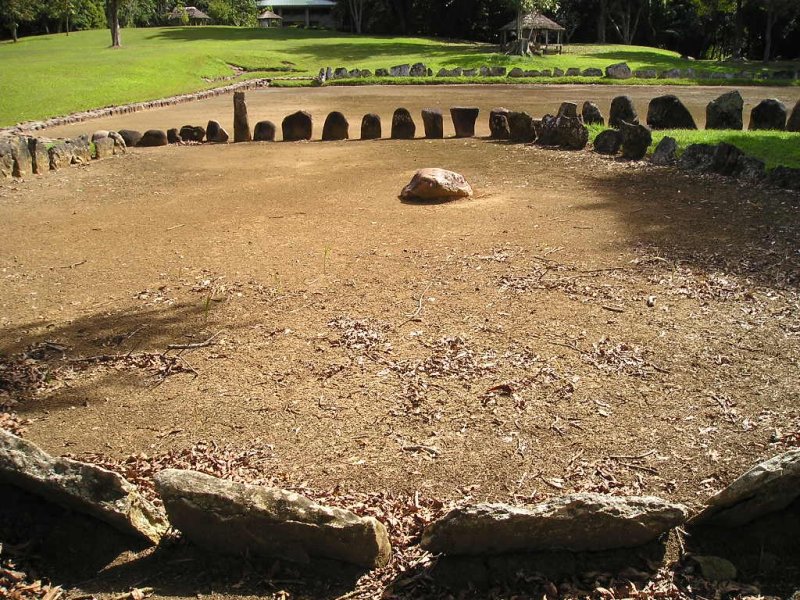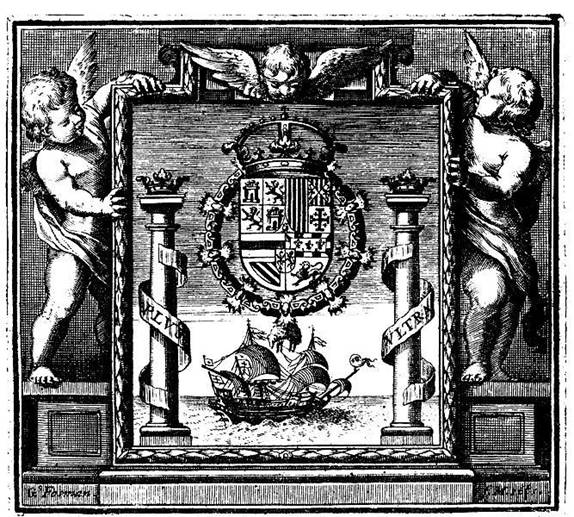|
Aguada Barrio-pueblo
Aguada barrio-pueblo is a small barrio and the administrative center (seat) of Aguada, a municipality of Puerto Rico. Its population in 2010 was 1,324. Aguada barrio-pueblo has two subdivisions: California and Rosario. As was customary in Spain, in Puerto Rico, the municipality has a barrio called ''pueblo'' which contains a central plaza, the municipal buildings (city hall), and a Catholic church. Fiestas patronales (patron saint festivals) are held in the central plaza every year. The central plaza and its church The central plaza, or square, is a place for official and unofficial recreational events and a place where people can gather and socialize from dusk to dawn. The Laws of the Indies, Spanish law, which regulated life in Puerto Rico in the early 19th century, stated the plaza's purpose was for "the parties" (celebrations, festivities) (), and that the square should be proportionally large enough for the number of neighbors (). These Spanish regulations also stated that ... [...More Info...] [...Related Items...] OR: [Wikipedia] [Google] [Baidu] [Amazon] |
Commonwealth (U
A commonwealth is a traditional English term for a political community founded for the common good. The noun "commonwealth", meaning "public welfare, general good or advantage", dates from the 15th century. Originally a phrase (the common-wealth or the common wealth – echoed in the modern synonym "public wealth"), it comes from the old meaning of "wealth", which is "well-being", and was deemed analogous to the Latin ''res publica''. The term literally meant "common well-being". In the 17th century, the definition of "commonwealth" expanded from its original sense of "public welfare" or "wikt:commonweal, commonweal" to mean "a state in which the supreme power is vested in the people; a republic or democracy, democratic state". The term evolved to become a title to a number of political entities. Three countries – Australia, the Bahamas, and Dominica – have the official title "Commonwealth", as do four U.S. states and two Territories of the United States, U.S. territories. Sin ... [...More Info...] [...Related Items...] OR: [Wikipedia] [Google] [Baidu] [Amazon] |
Taíno
The Taíno are the Indigenous peoples of the Caribbean, Indigenous peoples of the Greater Antilles and surrounding islands. At the time of European contact in the late 15th century, they were the principal inhabitants of most of what is now The Bahamas, Cuba, the Dominican Republic, Haiti, Jamaica, Puerto Rico, and the northern Lesser Antilles. The Lucayan people, Lucayan branch of the Taíno were the first New World peoples encountered by Christopher Columbus, in the Lucayan Archipelago, Bahama Archipelago on October 12, 1492. The Taíno historically spoke an Arawakan languages, Arawakan language. Granberry and Vescelius (2004) recognized two varieties of the Taino language: "Classical Taino", spoken in Puerto Rico and most of Hispaniola, and "Ciboney Taino", spoken in the Bahamas, most of Cuba, western Hispaniola, and Jamaica. They lived in agricultural societies ruled by caciques with fixed settlements and a Matrilineality, matrilineal system of kinship and inheritance. Taíno ... [...More Info...] [...Related Items...] OR: [Wikipedia] [Google] [Baidu] [Amazon] |
List Of Communities In Puerto Rico
In the archipelago and island of Puerto Rico, there are 78 municipalities serving as second-level administrative divisions, and 902 barrios proper, consisting of 828 barrios and 74 barrios-pueblos, serving as third-level divisions. Barrios are subdivided into numerous subbarrios, districts, communities, and/or sectors. As a U.S. territory without sovereignty, Puerto Rico does not have first-level administrative divisions akin to regions, states, provinces, or departments. The following is a list of the 902 barrios, and some subbarrios, including the 40 subbarrios of Santurce, which is a barrio of San Juan, and communities (, on the U.S. Census) arranged in alphabetical order. __NOTOC__ A * Abra Honda, Camuy * Abras, Corozal * Aceitunas, Moca * Achiote, Naranjito * Adjuntas barrio-pueblo * Aguacate, Aguadilla * Aguacate, Yabucoa * Aguada barrio-pueblo * Aguadilla barrio-pueblo * Aguas Blancas, Yauco * Aguas Buenas barrio-pueblo * Aguirre, Sali ... [...More Info...] [...Related Items...] OR: [Wikipedia] [Google] [Baidu] [Amazon] |
Cristóbal Colón
Christopher Columbus (; between 25 August and 31 October 1451 – 20 May 1506) was an Italian explorer and navigator from the Republic of Genoa who completed four Spanish-based voyages across the Atlantic Ocean sponsored by the Catholic Monarchs, opening the way for the widespread European exploration and colonization of the Americas. His expeditions were the first known European contact with the Caribbean and Central and South America. The name ''Christopher Columbus'' is the anglicization of the Latin . Growing up on the coast of Liguria, he went to sea at a young age and traveled widely, as far north as the British Isles and as far south as what is now Ghana. He married Portuguese noblewoman Filipa Moniz Perestrelo, who bore a son, Diego, and was based in Lisbon for several years. He later took a Castilian mistress, Beatriz Enríquez de Arana, who bore a son, Ferdinand. Largely self-educated, Columbus was knowledgeable in geography, astronomy, and history. He developed ... [...More Info...] [...Related Items...] OR: [Wikipedia] [Google] [Baidu] [Amazon] |
Francis Of Assisi
Giovanni di Pietro di Bernardone ( 1181 – 3 October 1226), known as Francis of Assisi, was an Italians, Italian Mysticism, mystic, poet and Friar, Catholic friar who founded the religious order of the Franciscans. Inspired to lead a Christianity, Christian life of poverty, he became a Mendicant, beggar and itinerant preacher. One of the most venerated figures in Christianity, Francis was canonized by Pope Gregory IX on 16 July 1228. He is commonly portrayed wearing a brown Religious habit, habit with a rope tied around his waist, featuring three knots symbolizing the evangelical counsels of poverty, chastity, and obedience. In 1219, he went to Egypt in an attempt to convert the sultan al-Kamil and put an end to the conflict of the Fifth Crusade. In 1223, he arranged for the first live nativity scene as part of the annual Christmas celebration in Greccio. According to Christian tradition, in 1224 Francis received the stigmata during the Vision (spirituality), apparition of ... [...More Info...] [...Related Items...] OR: [Wikipedia] [Google] [Baidu] [Amazon] |
Immaculate Conception
The Immaculate Conception is the doctrine that the Virgin Mary was free of original sin from the moment of her conception. It is one of the four Mariology, Marian dogmas of the Catholic Church. Debated by medieval theologians, it was not defined as a Dogma in the Catholic Church, dogma until 1854, by Pope Pius IX in the papal bull ''Ineffabilis Deus''. While the Immaculate Conception asserts Mary's freedom from original sin, the Council of Trent, held between 1545 and 1563, had previously affirmed her freedom from Catholic hamartiology, personal sin. The Immaculate Conception became a popular subject in literature, but its abstract nature meant it was late in appearing as a subject in works of art. The iconography of Our Lady of the Immaculate Conception shows Mary standing, with arms outstretched or hands clasped in prayer. The feast day of the Immaculate Conception is December 8. Many Protestant churches rejected the doctrine of the Immaculate Conception as unscriptural, t ... [...More Info...] [...Related Items...] OR: [Wikipedia] [Google] [Baidu] [Amazon] |
1918 San Fermín Earthquake
The 1918 San Fermín earthquake, also known as the Puerto Rico earthquake of 1918, struck the island of Puerto Rico at on October 11. The earthquake measured 7.1 on the moment magnitude scale and IX (''Violent'') on the Mercalli intensity scale. The mainshock epicenter occurred off the northwestern coast of the island, somewhere along the Puerto Rico Trench. The earthquake triggered a tsunami that swept the west coast of the island. The combined effects of the earthquake and tsunami made it one of the worst natural disasters that have struck the island. The losses resulting from the disaster were approximately 76–118 casualties and $4–29 million in property damage. Earthquake The epicenter of the 1918 San Fermín earthquake was located in the Mona Passage off the northwestern coast of the island. The strongest ground shaking has been estimated at intensity IX on the Mercalli intensity scale. The resulting tsunami affected primarily the west coast towns of the island, primari ... [...More Info...] [...Related Items...] OR: [Wikipedia] [Google] [Baidu] [Amazon] |
Roman Catholic
The Catholic Church (), also known as the Roman Catholic Church, is the largest Christian church, with 1.27 to 1.41 billion baptized Catholics worldwide as of 2025. It is among the world's oldest and largest international institutions and has played a prominent role in the history and development of Western civilization. O'Collins, p. v (preface). The church consists of 24 ''sui iuris'' (autonomous) churches, including the Latin Church and 23 Eastern Catholic Churches, which comprise almost 3,500 dioceses and eparchies around the world, each overseen by one or more bishops. The pope, who is the bishop of Rome, is the chief pastor of the church. The core beliefs of Catholicism are found in the Nicene Creed. The Catholic Church teaches that it is the one, holy, catholic and apostolic church founded by Jesus Christ in his Great Commission, that its bishops are the successors of Christ's apostles, and that the pope is the successor of Saint Peter, upo ... [...More Info...] [...Related Items...] OR: [Wikipedia] [Google] [Baidu] [Amazon] |
Laws Of The Indies
The Laws of the Indies () are the entire body of laws issued by the Spanish Crown in 1573 for the American and the Asian possessions of its empire. They regulated social, political, religious, and economic life in these areas. The laws are composed of myriad decrees issued over the centuries and the important laws of the 16th century, which attempted to regulate the interactions between the settlers and natives, such as the Laws of Burgos (1512) and the New Laws (1542). Throughout the 400 years of Spanish presence in these parts of the world, the laws were compiled several times, most notably in 1680 under Charles II in the Compilation of the Laws of the Kingdoms of the Indies. This became considered the classic collection of the laws, although later laws superseded parts of it, and other compilations were issued. History The Spanish Viceroyalties in the Americas generated conflict between indigenous peoples ''('Natives' or 'Indians')'' and the Spanish colonists. The Spanis ... [...More Info...] [...Related Items...] OR: [Wikipedia] [Google] [Baidu] [Amazon] |
List Of Municipalities In Puerto Rico
The municipalities of Puerto Rico (Spanish language, Spanish: ''municipios de Puerto Rico'') are the second-level List of administrative divisions by country, administrative divisions defined with geographic Border, boundaries and governmental authority in the Geography of Puerto Rico, archipelago and island of Puerto Rico. Amounting to 78 municipal corporation, incorporated towns and cities equivalent to List of United States counties and county equivalents, U.S. counties, only two of which are outside the main island, namely the smaller islands of Vieques, Puerto Rico, Vieques and Culebra, Puerto Rico, Culebra, each municipality is governed by an elected Mayor–council government#Strong-mayor government form, strong mayor and a Unicameralism, unicameral municipal council, legislature. The municipalities are divided into 902 Barrios of Puerto Rico, barrios, the third-level administrative divisions under the political leadership of the municipal government. As a Territories of th ... [...More Info...] [...Related Items...] OR: [Wikipedia] [Google] [Baidu] [Amazon] |
Fiestas Patronales In Puerto Rico
in Puerto Rico are yearly celebrations held in each municipality of the island. Like in other countries, "" are heavily influenced by Spanish culture and religion, and are dedicated to a saint or the Blessed Virgin Mary under one of her titles. The festivities usually include religious processions honoring its Catholic heritage. However, elements of African and local culture have been incorporated as well. They also feature parades, games, artisans, amusement rides, regional food, and live entertainment. on ''Welcome to Puerto Rico'' Schedule of fiestas patronales [...More Info...] [...Related Items...] OR: [Wikipedia] [Google] [Baidu] [Amazon] |






